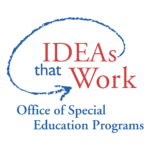During her keynote presentation, Dr. Nancy Dome explored what equity can look like in schools when implementation is intentional and relationships are at the core.
Much of the time when we look at data it is through a deficit lens, which allows us to separate ourselves from the outcomes and lay the majority of the responsibility on the individual. However, research has demonstrated the connection between building meaningful relationships and student achievement and reduced student discipline. Thus, like any good implementation, effectiveness and success is a product of intentionality and lots of practice. This means we have to begin to invest our resources and time into supporting staff to build their own awareness of self while concurrently shifting the focus from primarily one of content to one of developing social supports to strengthen relationships with students. Relationships are paramount to provide a foundation of support and purpose.
Dr. Dome spoke at the Equity Symposium presented by the State Performance Plan Technical Assistance Project that was funded by the California Department of Education, Special Education Division, and co-hosted by Student Involvement and the Chicano and Latino Studies departments at Sonoma State University. The Equity Symposium was held October 18, 2018.
Dome, Nancy. 2018. The Connection between Disproportionality and Relationships. State Performance Plan Technical Assistance Project.
The article examines how the local contexts of school districts affect teacher’s perceptions of special education and students. The article is useful to practitioners because it gives insight into how teacher’s perceptions may be related to disproportionate outcomes.
Skiba, R.J., Simmons A., and others. “The Context of Minority Disproportionality: Practitioner Perspectives on Special Education Referral”. Teachers College Record. Volume 108, No. 7, 2006: 1424-1459.
Providing an essential counternarrative for white teachers in urban settings, the authors draw on historical belief systems and current events to reinforce the importance of their work and give strategies for improvement.
Moore, Eddie. 2018. The Guide for White Women Who Teach Black Boys. Thousand Oaks, CA: Corwin
The tool from the National Center for Culturally Responsive Education Systems Training (NNCREST) provides an overview of how RtI can be understood and used with diverse learners. It is useful for practitioners because it offers insight into how RtI can extend beyond a policy prescription in order to truly be responsive to all learners.
Esparza Brown, J., and Doolittle, J. A Cultural, Linguistic, and Ecological Framework for Response to Intervention with English Language Learners. Washington, DC: Office of Special Education Programs, U.S. Department of Education, 2008.
The authors discuss the need to use UDL and CRT in instruction. They argue that pre service and inservice teachers are culturally situated within cultural and linguistic groups. It is important for pre- and in-service teachers to understand this cross-pollination when using the UDL Guidelines as an implementation tool in their classrooms to proactively identify and address potential barriers to student learning while sustaining their students' cultural and linguistic identities.
Takemae, N., Nicoll-Senft, J., & Tyler, R. M. (2022). Addressing Issues of Equity Using the Cross-Pollination of Universal Design for Learning and Culturally Responsive Teaching. PDS Partners: Bridging Research to Practice, 17(1), 9–15.
This study explores Asian American teachers’ performances of racial/ethnic identities and pedagogical practices in the classroom.
Chow, C. J. (2021). Asian American teachers in U.S. classrooms: Identity performances and pedagogical practices. Pedagogy, Culture & Society, 29(1), 21–41.
By highlighting Angela Ward, Supervisor of Race and Equity Programs in Austin schools, the author shares with readers particular equity challenges and successes in an expanding urban district.
Blad, Evie. 2019. 2019 Leaders to Learn From: Angela Ward. “Confronting and Combating Bias in Schools.” Education Week February 20, 2019.
Offers approaches and activities for enabling educational leaders to gain a personal understanding of what cultural proficiency means in practice; use collaborative activities to effect change in a school; and lead a learning community toward becoming a culturally proficient organization.
Lindsey, Randall, Kikanza Nuri Robins, and Raymond Terrell. 2009. Cultural Proficiency: A Manual for School Leaders, 3rd ed. Thousand Oaks, CA: Corwin Press.
Addresses essential elements of becoming culturally responsive and ways in which teachers can implement strategies in their classrooms.
Technical Assistance Center on Disproportionality, New York University (2008).
Describes differentiated instruction, what it is and how it applies an approach to teaching and learning for diverse learners and includes information on the principles of differentiated instruction, seven building blocks, and available resources.
Technical Assistance Center on Disproportionality, New York University (2007).


